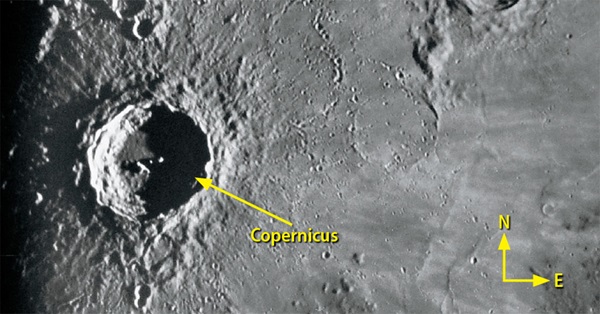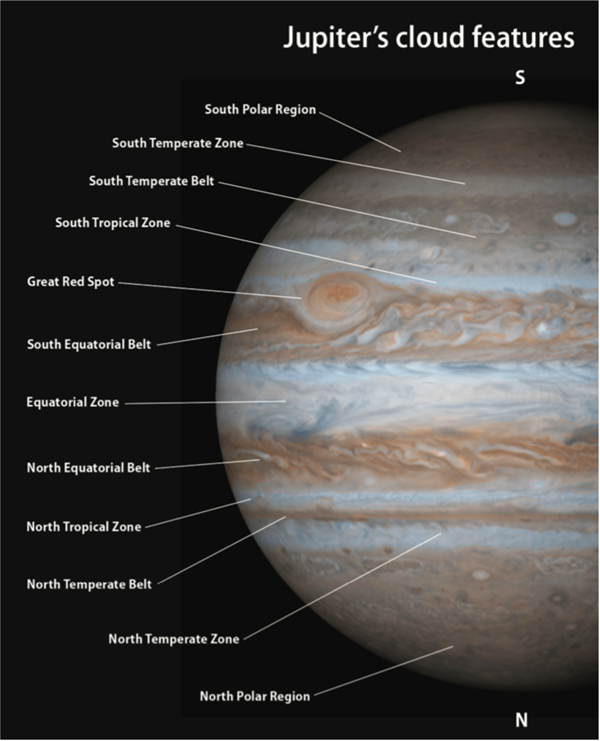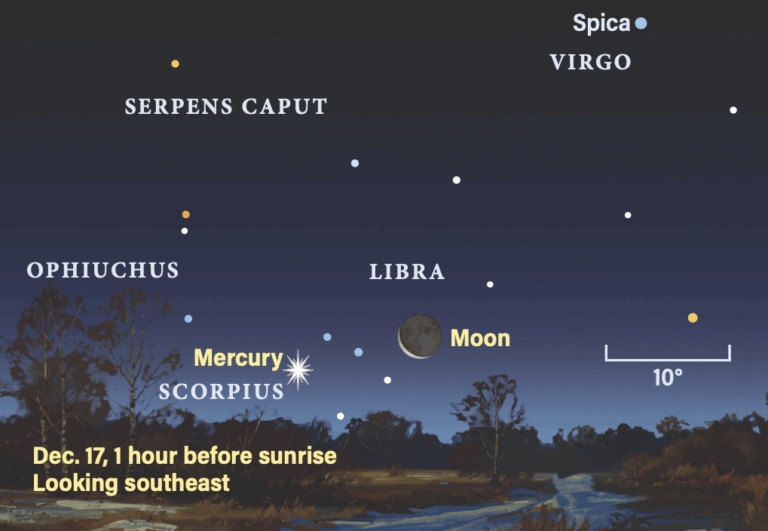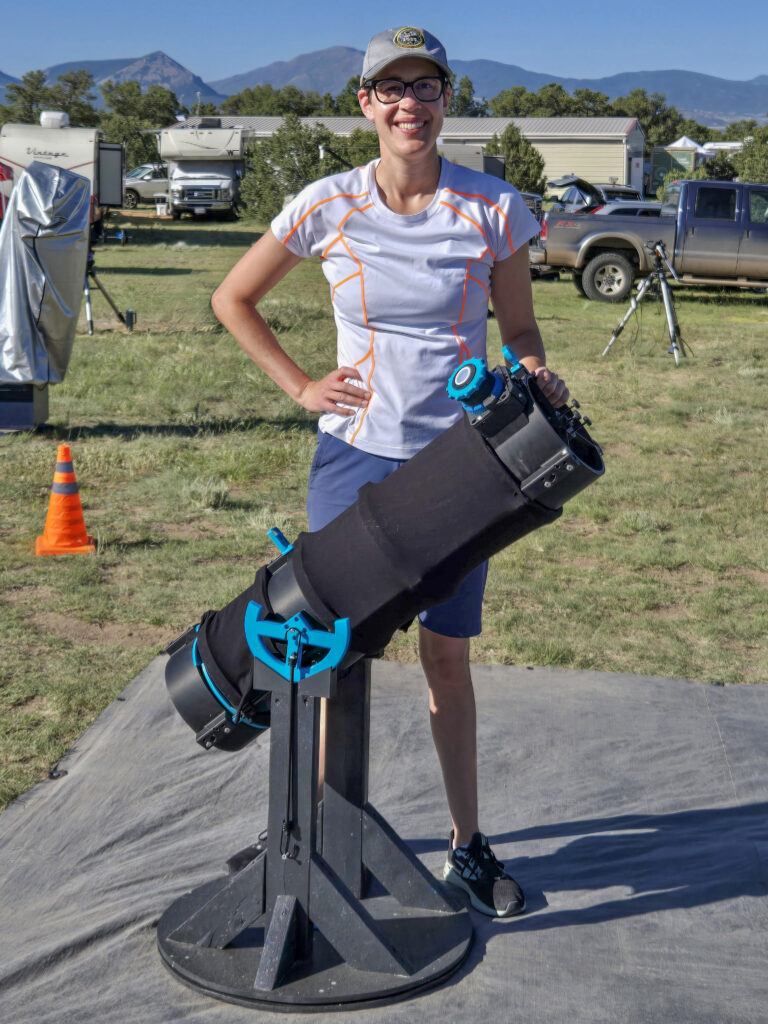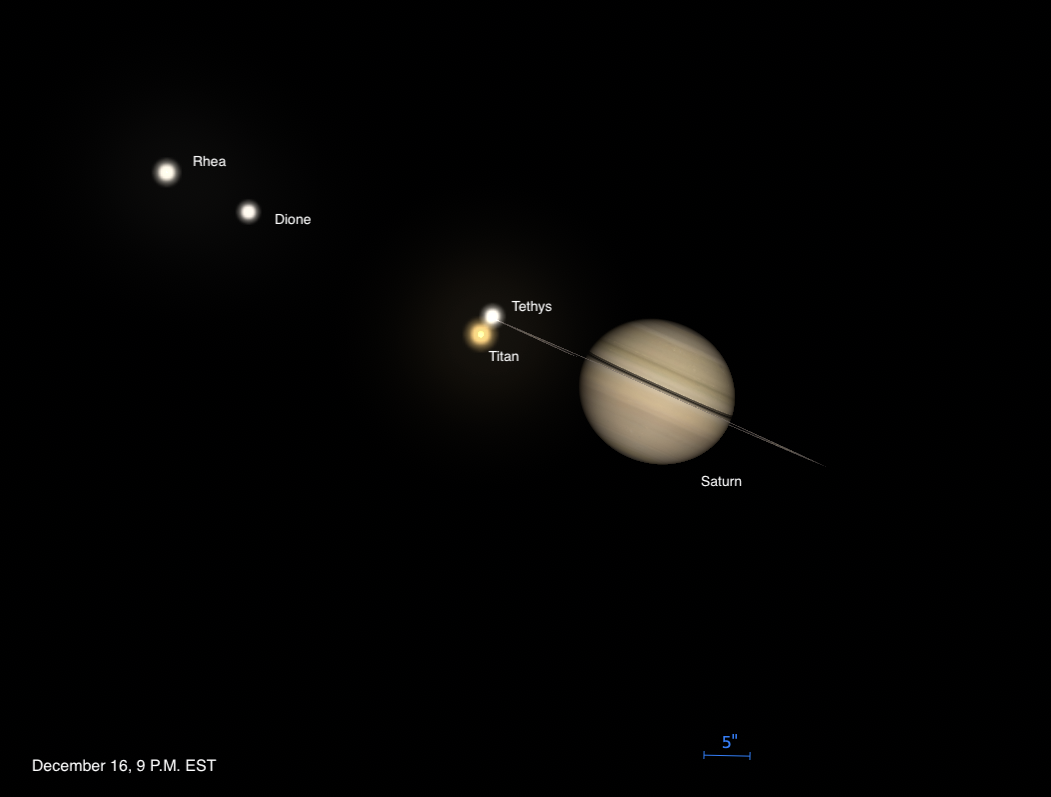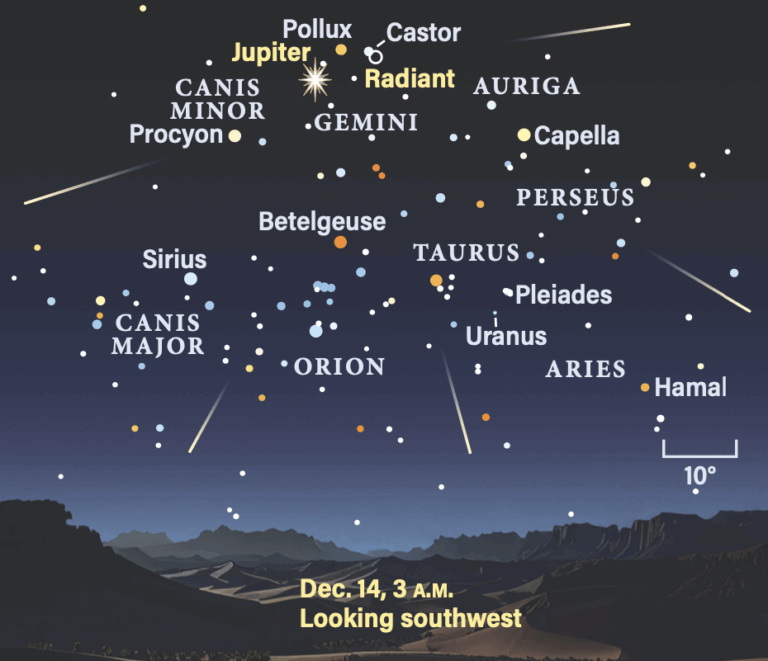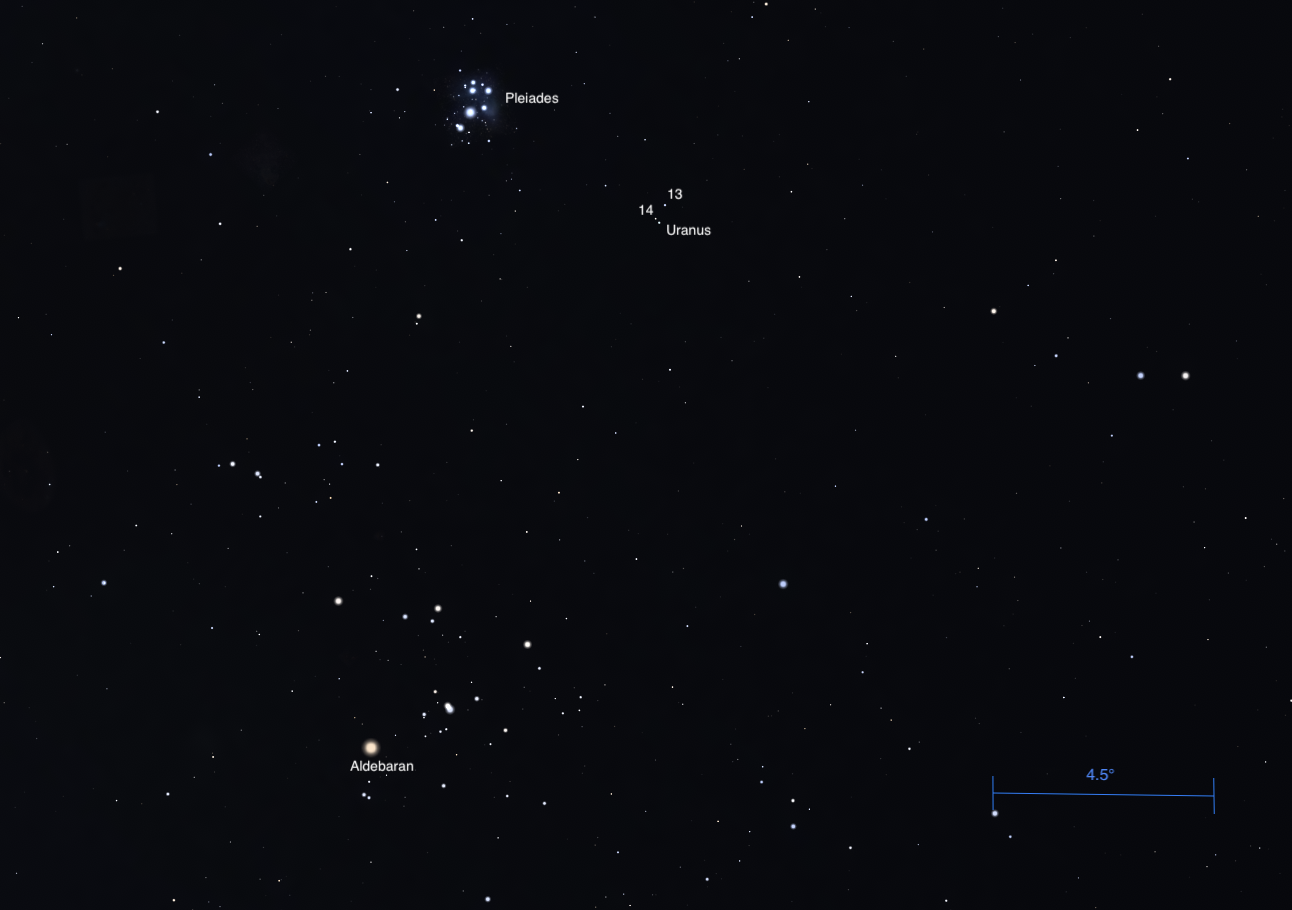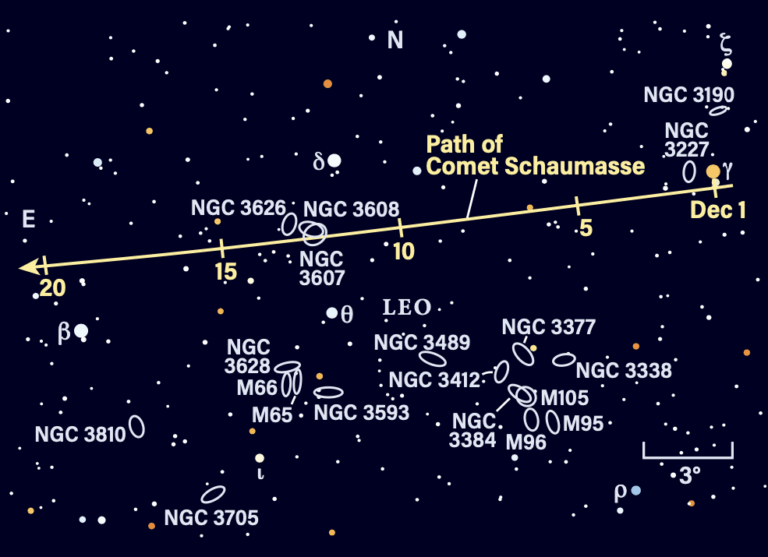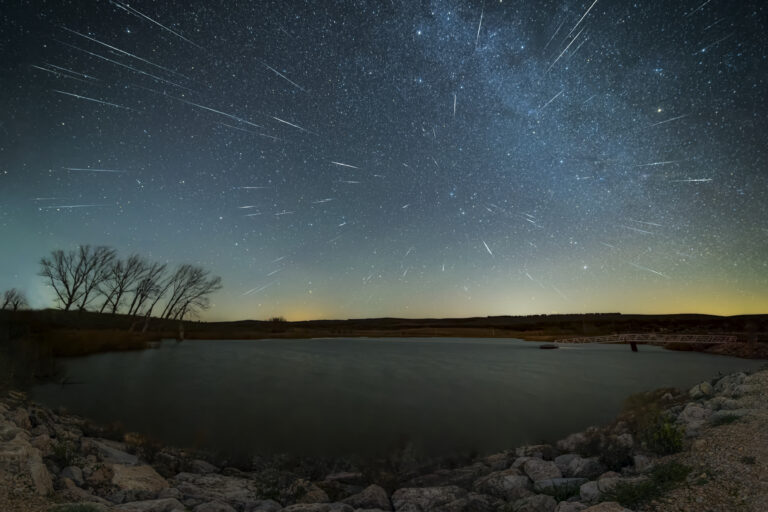Key Takeaways:
Today and tomorrow, Comet 88P/Howell skims past the loosely packed globular star cluster NGC 5897, sometimes called the Ghost Globular, in Libra. The comet and the cluster are both faint, and they’re setting as darkness falls, so you’ll want to make use of the brief time between sunset and moonrise to spot them. You’ll want at least a small scope for the best view, although larger instruments are better.
On the 4th, Howell is 13′ west-southwest of the cluster two hours after sunset. By the same time on the 5th, the comet is 36′ east-southeast of the cluster. Compare and contrast the appearance of each. Despite its diameter of about 170 light-years, NGC 5897’s distance — roughly 24,000 light-years from Earth — means it appears only 12′ across. Its magnitude of 8.4 means it is likely slightly brighter than the comet, although the difference may be hard to discern.
If you miss your chance this week, don’t worry — Howell will visit several more globulars later in the month, when the Moon won’t interfere.
Sunrise*: 6:31 A.M.
Sunset: 7:26 P.M.
Moonrise: 8:59 P.M.
Moonset: 8:38 A.M.
Moon Phase: Waning gibbous (94%)
*Times for sunrise, sunset, moonrise, and moonset are given in local time from 40° N 90° W. The Moon’s illumination is given at 12 P.M. local time from the same location.
The gas giant Jupiter is known for its otherworldly weather. And right now, it’s putting on a show. Every few years, Jupiter experiences outbreaks of brilliant white storms in its Northern Temperate Belt, or NTB. Although the next outbreak wasn’t expected until 2021, it’s happening early — storms burst onto the scene August 18 and were first detected separately by two frequent Astronomy contributors: Damian Peach and Martin Ratcliffe. It was reported shortly after by Japanese amateur astronomer Isao Miyazaki.
Since then, a second outbreak has occurred, starting early September 2, and more may follow. To catch sight of the storms, you’ll need a telescope with an aperture of 8 inches or larger and a dark, steady sky. Jupiter rotates in just under 10 hours, meaning its features change relatively quickly, even over the course of a single night. Currently, the magnitude –2.5 gas giant is visible in the evenings, already above the southern horizon at sunset and setting around 2 A.M. local time. If you’re an experienced imager, the British Astronomical Association is requesting images of the storms.
Even if you don’t have a large scope or imaging capabilities, Jupiter — and nearby Saturn, about 8.3° to its east — are great targets within the constellation Sagittarius. The two planets and several of their moons are visible in small scopes and even binoculars, so don’t feel you’re missing out on a great sight without a larger instrument.
Sunrise: 6:32 A.M.
Sunset: 7:24 P.M.
Moonrise: 9:23 P.M.
Moonset: 9:37 A.M.
Moon Phase: Waning gibbous (89%)
Sunday, September 6
The Moon passes 0.03° north of Mars at 1 A.M. EDT. They’re close enough to appear in the same field of view of binoculars and small scopes. You’ll find them together in the southeastern corner of Pisces the Fish. The bright Moon, less than a week past Full, will likely wash out the dim stars of the constellation, but magnitude –1.9 Mars will still be easy to pick out.
For observers in central South America, North Africa, and southern Europe, the Moon and Mars will do more than make a close approach. You’ll see the Moon completely occult, or pass in front of, Mars. Check the International Occultation Timing Association’s page on the event for occultation times (given in Universal Time, or UT) from the location nearest you. In some places, the occultation will begin and end late on the 5th.
The Moon reaches apogee, the farthest point in its orbit from Earth, at 2:29 A.M. EDT. At that time, our satellite will be 252,032 miles (405,606 kilometers) from Earth.
Sunrise: 6:33 A.M.
Sunset: 7:23 P.M.
Moonrise: 9:48 P.M.
Moonset: 10:35 A.M.
Moon Phase: Waning gibbous (82%)
Monday, September 7
The Moon passes 3° south of Uranus at midnight EDT this morning. You’ll find the pair about 15° above the eastern horizon in Aries the Ram. Uranus is roughly halfway between Aries’ bright star Hamal and Menkar in Cetus. The waning Moon may make it hard to spot the ice giant’s magnitude 5.7 glow, but spend some time in the region with binoculars or your scope, and you may spot the “flat”-looking grayish disk.
Saturn’s two-faced moon Iapetus reaches superior conjunction today. You’ll find the planet and its system of moons — the largest in the solar system — in Sagittarius. Jupiter lies nearby, to Saturn’s west. They’re visible for a few hours after midnight, and again after sunset.
Once you’ve focused in on the planet, look for Iapetus 63″ due north of Saturn. The small moon shines at magnitude 11. Because its two hemispheres have vastly different albedos — one is dark, reflecting little light, while the other is brighter and reflects more light — the moon swings between magnitudes 10.5 and 11.7, depending on which hemisphere (or combination of the two) is facing Earth. At superior conjunction, 50 percent of each side is pointed toward us, leaving it roughly in the middle of the two extremes.
With a telescope capable of reaching magnitude 11, you’ll also see several of Saturn’s other moons: Rhea, Tethys, and Dione (all 10th magnitude), as well as magnitude 8 Titan. Once you’ve spotted these small points of light, take some time to admire Saturn’s rings, which extend about 40″ from end to end. You may even spot the shadow of the planet falling on the rings’ eastern side.
Sunrise: 6:34 A.M.
Sunset: 7:21 P.M.
Moonrise: 10:14 P.M.
Moonset: 11:34 A.M.
Moon Phase: Waning gibbous (75%)
Several small, unassuming constellations are nestled between Cygnus and Aquila, high in the south this evening. One of them is Vulpecula the Fox, home of M27 (NGC 6853), better known as the Dumbbell Nebula. Discovered by Charles Messier in 1764, it is the first planetary nebula ever identified.
The Dumbbell is named for its elongated, bi-lobed appearance when viewing it through binoculars or a telescope. Photos reveal a more circular shape, although its dumbbell-like structure remains. This delicate object is one of the last stages in the life of a Sun-like star, as it puffs off its outer layers, lighting them up for a brief period of tens of thousands of years.
M27 spans 8′ by 5.7′. Its magnitude 7.3 glow is challenging but possible for binoculars, and within easier reach of a small scope. The nearest bright guidepost is the magnitude 3.1 double star Albireo in Cygnus, which lies a little less than 8.5° northwest of the nebula. Magnitude 3.5 Gamma (γ) Sagittae is a little closer — M27 is 3.2° due north of this star. The best time to look for the Dumbbell tonight is the hours between astronomical twilight and moonrise, when the sky is darkest.
Sunrise: 6:35 A.M.
Sunset: 7:19 P.M.
Moonrise: 10:45 P.M.
Moonset: 12:33 P.M.
Moon Phase: Waning gibbous (66%)
Wednesday, September 9
Mars is stationary against the background stars at 2 P.M. EDT. It will now begin a retrograde loop, switching from its previous eastward motion to slide westward through Pisces.
Early morning is the best time to observe the Red Planet; it blazes at magnitude –2 high in the southwestern sky in the hours before sunrise. You’ll find it 5° north-northwest of Alrescha, Pisces’ magnitude 3.8 alpha star.
An extremely favorable North Hemisphere opposition is looming ever closer for Mars. Its disk currently spans 20″ and will continue to grow. The larger disk will make it easier to pick out features for observers with steady skies and a good telescope. At 4 A.M. EDT, the large, dark Syrtis Major is rotating onto the disk. Above it is the bright Hellas basin. Thanks to Mars’ rotation rate, landmarks appear to move backward when observed at the same time from night to night. Over the next few days and weeks, you’ll have to observe Mars earlier to catch the same features.
Sunrise: 6:36 A.M.
Sunset: 7:18 P.M.
Moonrise: 11:21 P.M.
Moonset: 1:33 P.M.
Moon Phase: Waning gibbous (57%)
Thursday, September 10
Last Quarter Moon occurs at 5:26 A.M. EDT. You can observe our satellite early this morning, rising in the east in Taurus the Bull. Look to the Moon’s upper right to find the bright, golden-hued star Aldebaran, or straight above it to see the Pleiades star cluster, also known as M45.
One of the easiest features to spot during this phase is the large, bright crater Copernicus. Nearly 58 miles (93 km) across, this feature is relatively young — astronomers think it is less than one billion years old. Material flung out from its creation is still easily visible as bright rays streaking outward from the central crater. Above Copernicus is Mare Imbrium, or the Sea of Rains. The curved line of the Apennine Mountains, which lies southeast of Imbrium, is disappearing into the darkness of the terminator separating lunar night and day. These peaks are some of the Moon’s tallest.
Sunrise: 6:37 A.M.
Sunset: 7:16 P.M.
Moonrise: —
Moonset: 2:33 P.M.
Moon Phase: Last Quarter (47%)
Friday, September 11
Asteroid 19 Fortuna reaches opposition at 3 A.M. EDT in Pisces. One of the largest bodies in the main belt, Fortuna is about 124 miles (200 km) across. Despite its size, Fortuna has a low albedo, meaning it doesn’t reflect much sunlight. It’s currently around magnitude 9.8 and will require high-powered binoculars or a small scope to spot. You can observe it early this morning in the southwestern sky, sinking toward the western horizon as sunrise approaches. Alternatively, Fortuna is rising in the east at sunset and climbs higher in the sky overnight.
Just 3.2° southeast of Fortuna is Neptune, across the border in Aquarius. It, too, is visible both early in the morning and again once darkness falls. The ice giant reaches opposition at 4 P.M. EDT today. Its bluish disk spans 2.3″ and is located about 2° east of magnitude 4.2 Phi (φ) Aquarii. If you draw a line from Hydor (Lambda [λ] Aquarii) toward Phi, continue along that line to find Neptune. It’s glowing at magnitude 7.9, also visible in either binoculars or a telescope. Over the course of the month, Neptune will continue drawing closer to Phi, closing out September only 1.5° from the star.
Sunrise: 6:38 A.M.
Sunset: 7:15 P.M.
Moonrise: 12:04 A.M.
Moonset: 3:31 P.M.
Moon Phase: Waning crescent (37%)

Observing the night sky is a fun and easy activity that anyone can do. Astronomy has compiled some of our best advice into our newest free downloadable ebook: Observing The Night Sky for Beginners.

